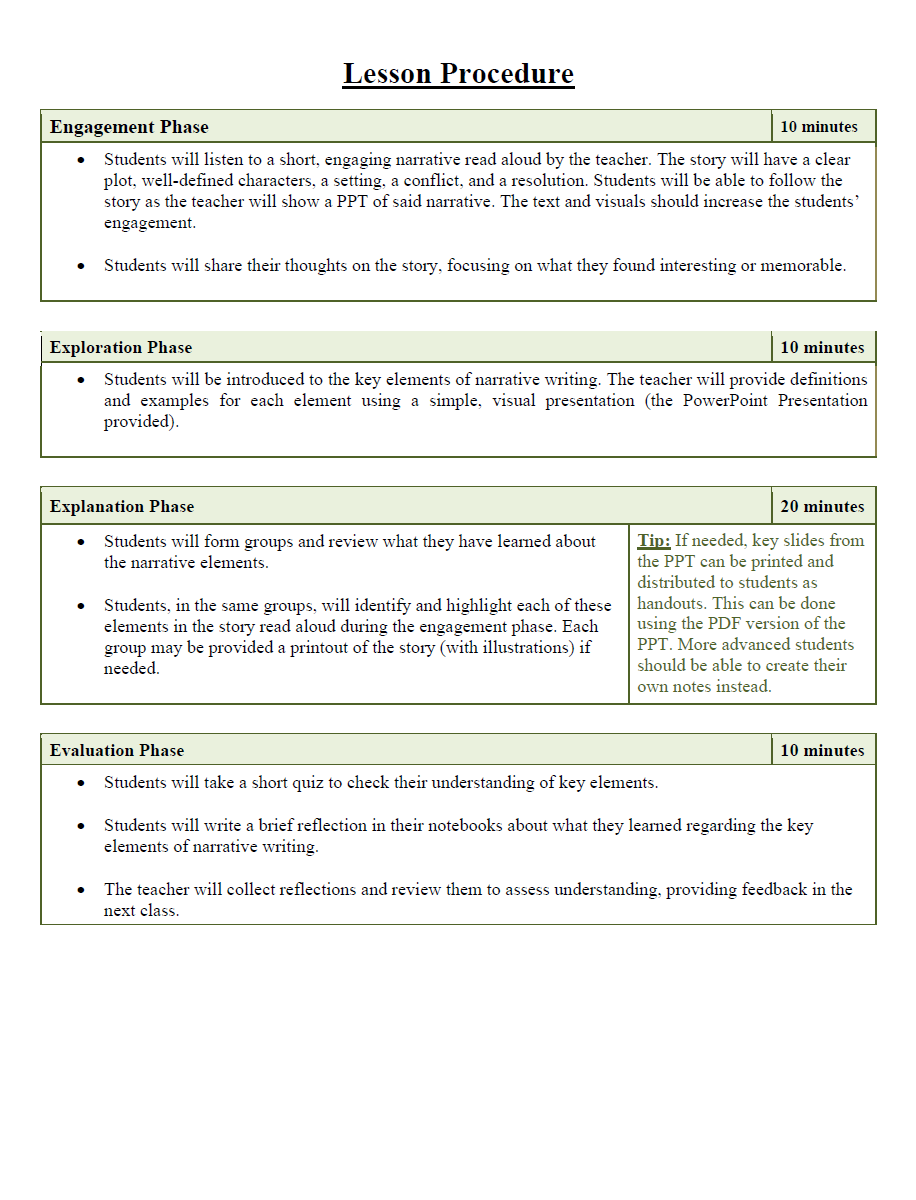Narrative Writing Lesson Plans | CSEC English A
Narrative Writing Lesson Plans | CSEC English A
Couldn't load pickup availability
This Narrative Writing Unit is a meticulously crafted resource tailored specifically for the CSEC English A syllabus. It is structured across 7 cohesive phases, with each phase containing a series of related lessons that build on one another to guide students from foundational concepts to advanced narrative writing techniques.
Key Features:
- 7 Phases, Step-by-Step: The unit is divided into seven logical phases that provide a structured and progressive approach to narrative writing. Lessons are sequenced to ensure students master essential skills before moving to more complex aspects.
- 5-E Lesson Plans: All lesson plans follow the 5-E model (Engage, Explore, Explain, Elaborate, and Evaluate), encouraging active learning and thorough comprehension.
- Completely Editable: Customize the lesson plans to meet your students' needs. Every component is fully editable, allowing for easy modifications.
- Teaching & Learning Materials: All necessary materials are included, such as PowerPoint presentations, study notes, videos, rubrics, and more, ensuring a comprehensive teaching experience.
- Top CSEC Stories for Analysis: To enhance learning, the lesson incorporates top stories from past CSEC candidates, providing real examples of successful narrative writing for students to analyze, learn from, and take inspiration from.
Unit Outline:
This unit moves students through 7 carefully structured phases, each focusing on a critical aspect of narrative writing:
-
Introduction to Narrative Writing: Students are introduced to the foundational elements of narrative writing, such as plot, characters, setting, and theme. They learn to recognize and apply these elements while analyzing stories.
-
Ideation, Planning, and Outlining: This phase guides students in developing their story ideas through character development, conflict creation, and outlining. Lessons emphasize the 4 Cs of Narrative Writing: Character, Conflict, Change, and Context. By the end, students will have crafted a first draft based on a structured plan.
-
Advanced Drafting: Students delve into advanced techniques such as incorporating dialogue, building immersive settings, and developing strong characters. They also refine their grammatical skills, focusing on irregular verbs in narrative writing.
-
Technical Aspects of Narrative Writing: This phase sharpens technical writing skills, teaching students how to balance Action, Description, and Dialogue (ADD), effectively "show, not tell," and experiment with narrative perspectives.
-
Advanced Narrative Devices: Students explore more sophisticated narrative techniques, such as using figurative language, foreshadowing, and flashbacks, to enrich their writing and add layers of depth to their stories.
-
Polishing the Draft: In this phase, students focus on revising and editing their drafts for clarity, coherence, and correctness. Peer reviews and multiple revisions help students refine their narratives to a high standard, preparing them for exam-level writing.
-
Exam Practice: The final phase offers students practical experience with mock exams, simulating real exam conditions. Students receive peer and teacher feedback based on the CSEC marking scheme, helping them identify areas for improvement and solidify their exam readiness.
With this structured progression, the unit ensures that students not only master narrative writing but also gain confidence in their ability to apply these skills in the CSEC exam context. This thorough, syllabus-aligned approach equips both teachers and students with the tools needed for success.
Share














